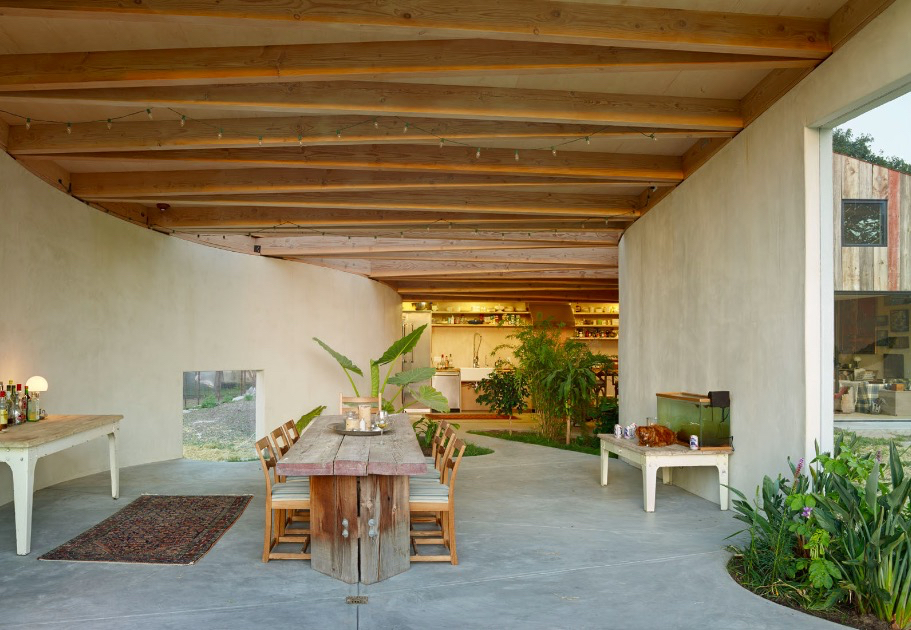
There's something magical about an indoor garden. All that greenery in among the furniture is just so...unexpected. A collection of palms towering over the corner of a bathroom, an olive tree growing through a kitchen island, or a Devil's Ivy trailing up a living room wall. Plants add texture and color and literal life to a room, and the great thing about an indoor garden is you don't need any outdoor space to create one.
Much like outdoor gardens, their indoor counterparts can vary in size and shape. An indoor garden can be something as complex as an actual soil bed within the layout of your home, to an amazing display of potted houseplants. Your approach just depends on the space, time, and budget you have.
14 indoor garden ideas
Here will we cover it all, from trees growing up through kitchens to beautiful container displays, plus there are loads of tips and tricks from the experts to help you create an indoor garden that suits your home.
1. Pick plants that will thrive indoors
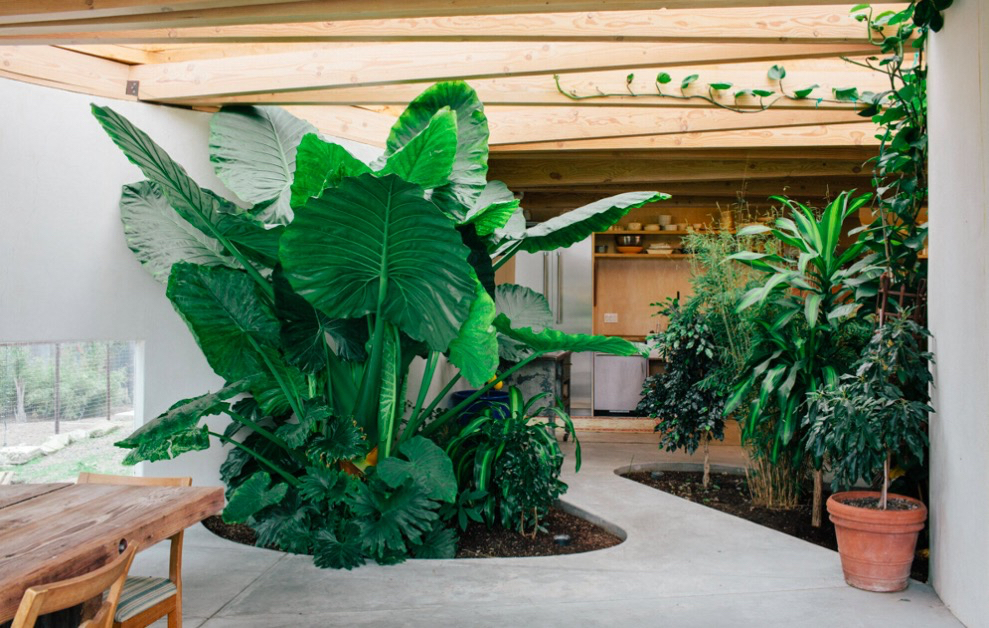
First and foremost when creating an indoor garden you need to get the types of plants right. And by right we mean not just going on aesthetics but choosing houseplants that are actually going to thrive in your room's conditions.
'When starting an indoor garden or an indoor jungle, do not feel you have to have them all right away! Take your time with each one you acquire, and learn where it needs to be and how often to water it, once you have success with one or two, you will feel empowered to continue growing your collection,' suggests Alice Dobie, founder of Botanica Studio.
'And you need to be realistic about how many plants can be supported by your windows – it is not as simple as "everything will grow well if only I care for it correctly,' says Darryl Cheng, founder of The House Plant Journal. 'Select the plants that will grow well for the light situation you have. For outdoor gardening, the saying is "the right plant for the right place". When growing plants in moveable containers, you still need to respect this idea and realize that the limiting factor of good growth is the size of your windows.'
'Ignore what you have probably heard about plants that "thrive in low light" - this is just interior design code for "a plant that dies slower and less noticeably than other plants. Start with giving your houseplants the best possible light - light is the foundation of success with houseplants!'
Takeaway, position your indoor garden in the sunniest spots of your home - our feature on how to turn your windowsill into an indoor garden will help you here.
2. Make greenery pop with contrasting wall colors
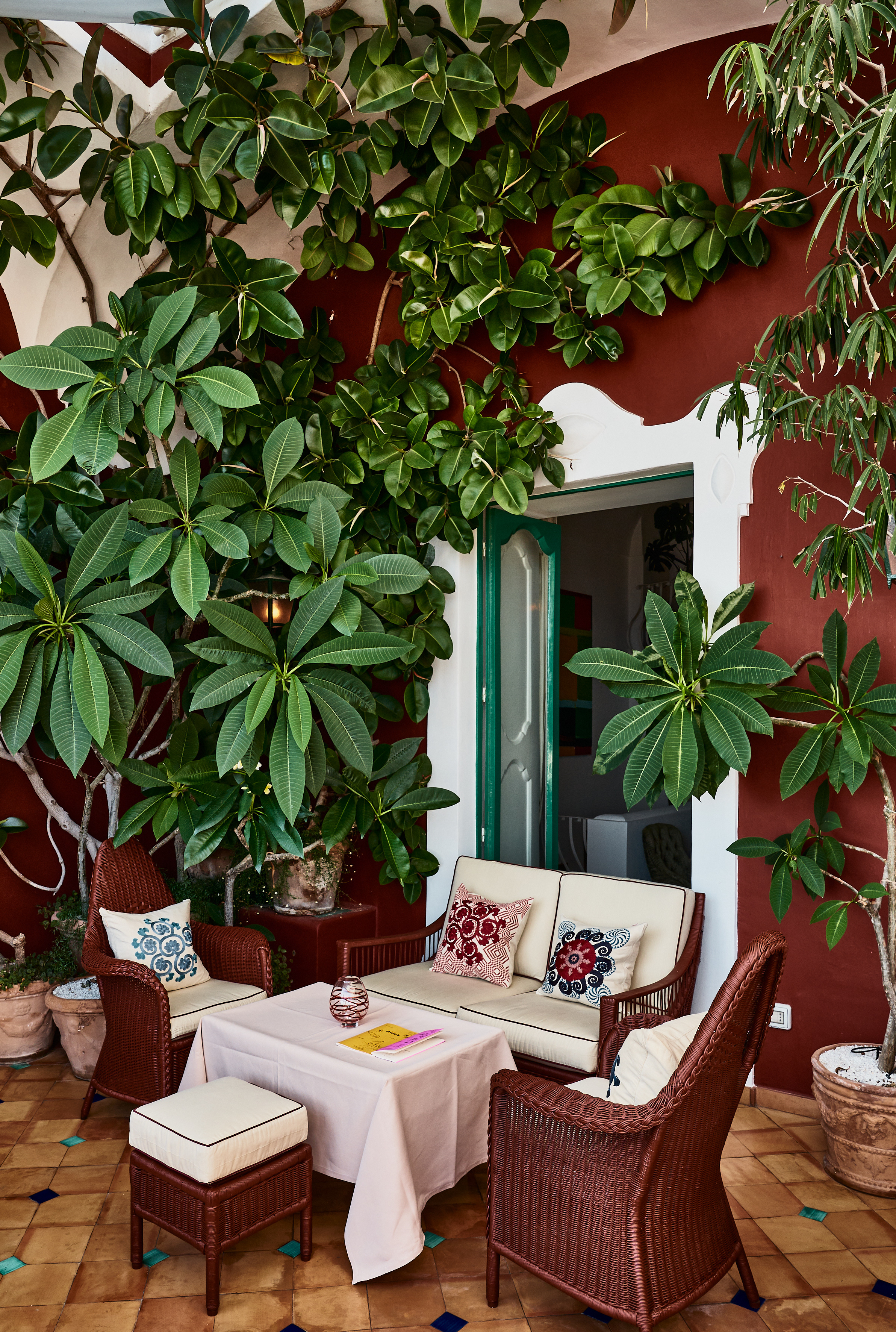
There is so much inspiration to be taken from the stunningly designed Hotel Le Sirenuse, but their use of indoor plants is genius. In almost every room you will find nature creeping in in both subtle and statement ways.
We love the organic feel of the houseplants used here, they feel like less of a deliberate display and more like they have intruded on the room, growing naturally to the shape of its curves. And while you may have to wait a while to get an indoor garden of this size, one thing you can take from this space immediately is how the lush waxy green leaves look against the dark red. The contrast of colors is dramatic and gives even more depth to the greenery, while the white accents add a freshness and give the space a lift.
3. Ditch wallpaper and cover a wall in a climbing plant
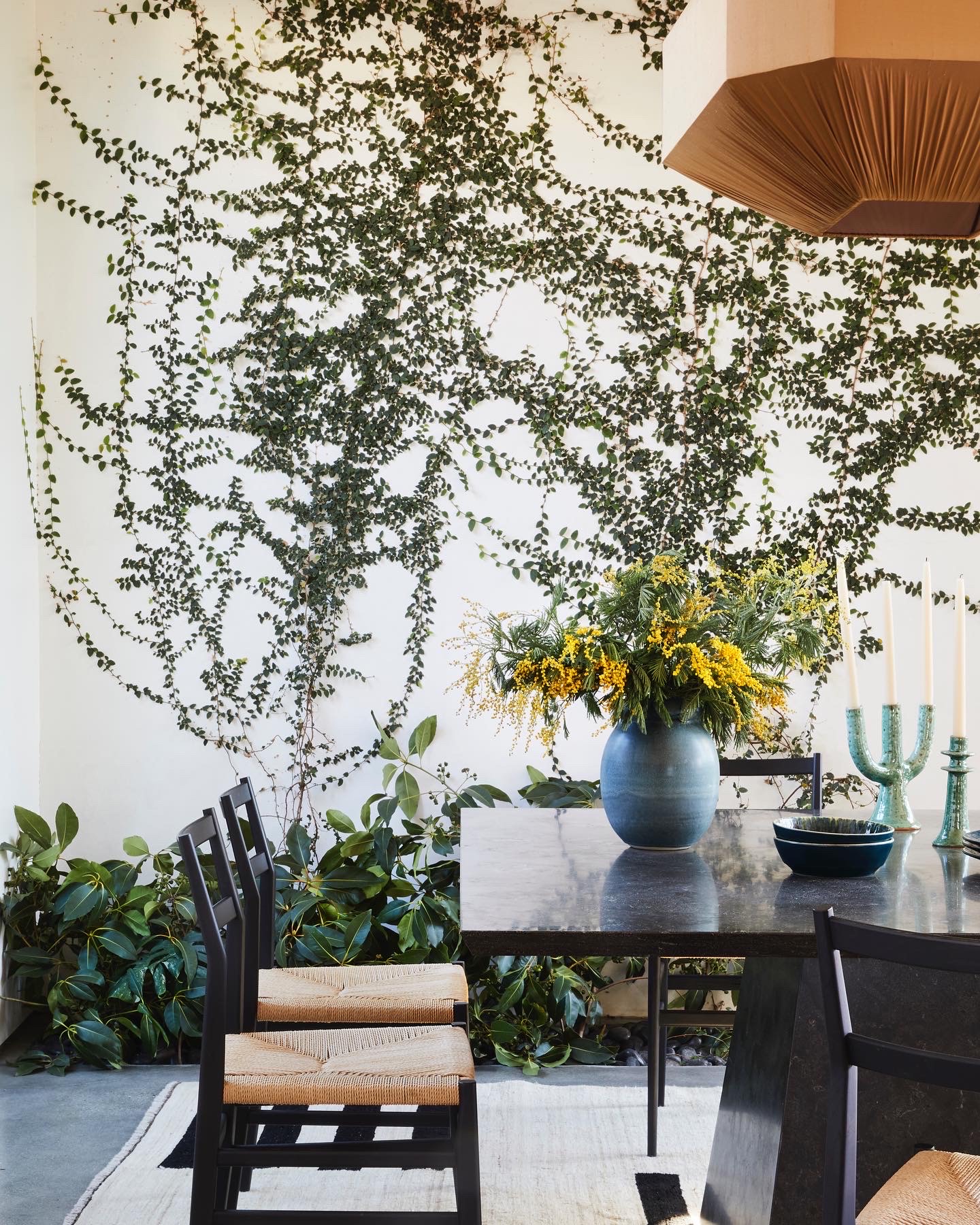
Why have a botanical print wallpaper when you can have the real thing? This beautiful dining room designed by Studio Montemayor has an actual border running along one wall, with lush greenery planted at the base and delicate Creeping Fig trailing up the walls. It adds an unexpected, almost magical feel to this contemporary space, and the clean lines and structured shapes of the modern furnishings clash beautifully with the wildness of the backdrop.
'We wanted to create a stunning but unexpected backdrop for the dining room and take advantage of the abundant natural light,' explains founder Regina Perez Montemayor. 'By planting Creeping Fig along the back wall we were able to enhance the indoor/outdoor dining experience, especially when the large floor-to-ceiling sliding glass doors are fully open. Given that the ground floor is an open floor plan encompassing the kitchen, dining, and living rooms, this feeling is extended to the entire space and highlights the best part of living in Los Angeles- the weather!'
4. Train a potted plant to climb a corner

Another gorgeous use of indoor plants by Le Sirenuse, and this wild Monstera is a really easy look to recreate. As for what are the best plants for a lush indoor garden, you can train Monstera to grow in this way. In fact in their natural habit, they grow aerial roots to wind up nearby trees, so you just have to create the conditions for them to do so.
The easiest way to do this is using a moss pole like this bendable one on Amazon, and positioning your plant in a space it will have the room to climb. A sunny corner would work best. For a wilder look that will allow the plant to spread, you may also want to add a trellis or wires to encourage the plant to start growing out as well as up.
'Many plant species are epiphytic and therefore climb on other plants and trees in their natural habitat, once these plants are in our homes they will often need a form of support (this is why you see many plants come on moss poles and frames), but this support can come in the form of growing them up walls or across window frames or even cascading down furniture. Plants can climb, trail, hang, grow tall, stay small, or just sit there and grow denser foliage – it really is a 'chose your own adventure' experience,' says Alice Dobie.
5. Create the impact of a living wall with shelving
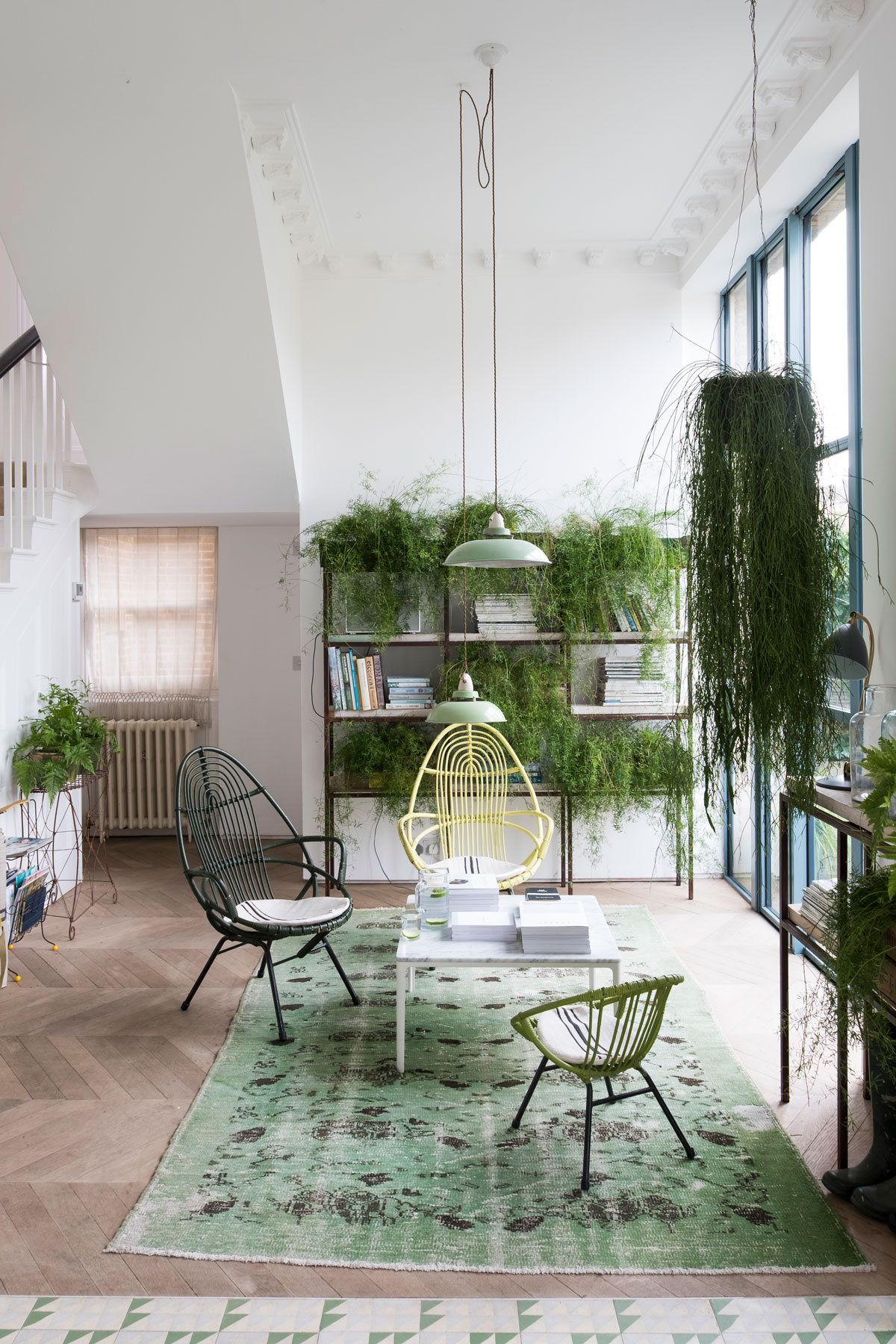
Living walls are a statement way to create an indoor garden, but there's no denying they can be expensive to create and aren't suitable for all homes. So a lovely (more low maintenance) alternative is to use shelving to create a similar look. You still get the impact of a vertical display without the cost and effort of planting up and caring for a real living wall.
Pick designs that have large gaps between the shelving so you can fit in some larger plants, and go for plants that really fill the space. You want to overall effect to be more than just houseplants displayed on shelves, the aim is for something really organic and wild looking – like the plants are actually growing out of the shelves themselves. Ferns are ideal for this, the fluffier the better. Boston Ferns, Asparagus Ferns, Japanese ferns and Maidenhair Ferns are good go-tos.
6. Blend indoors and out

The whole house designed by Mork-Ulnes Architects, has a seamless flow between indoors and out. The indoor gardens are woven into the layout, adding pockets of greenery that give a jungle-like feel to the rooms.
'[The homeowners] thrive on seeding new ideas constantly. With this new garden pavilion, they’ve added another wonder to their world. They wanted an indoor/outdoor kitchen and dining room that he could use year-round. The idea was to let the landscape bleed in and out of the building. They imagined it as a jungle, with exotic plants, such as papaya, banana, and mango, inside and out,' explains Casper Mork-Ulnes.
Be inspired by this tranquil space and create a similar feel by grouping pockets of houseplants together throughout a space, so you walk amongst greenery as you move around a room. And you can create that same effect of a miniature garden using potted plants – start with smaller, almost ground-level plants at the front of your display, and as you move towards the back or center pick taller more towering species.
7. Give smaller potted plants some height
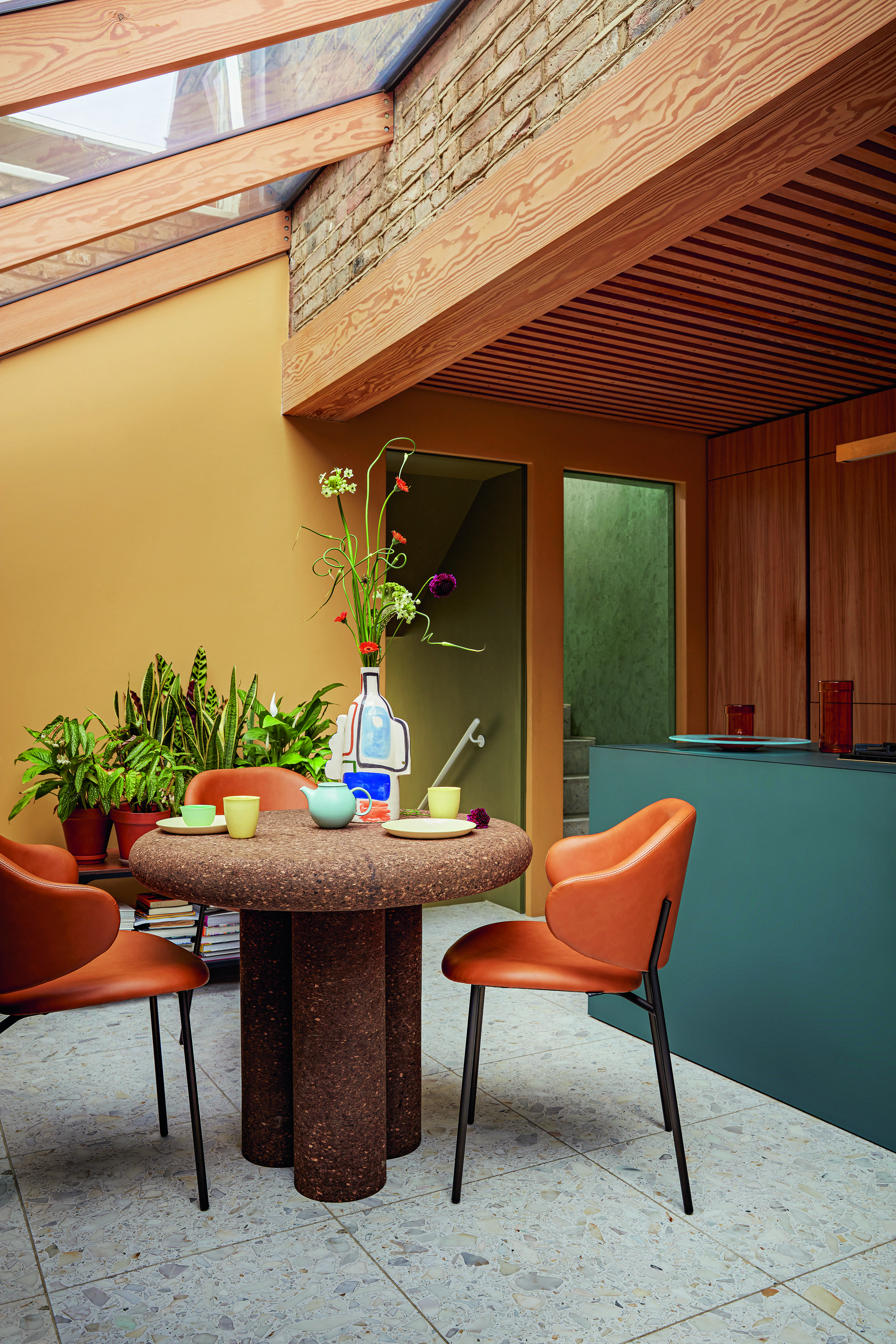
Speaking of pots, indoor container gardens are ideal for creating indoor gardens on a smaller scale. Group together plants that are going to add different heights and shapes and textures to turn even a small setup into a real display. Snake plants, Peperomia, and Calatheas all look wonderful together as they are all so different so will create an indoor garden with depth and interest.
And if you are going for smaller plants, use a plant stand, or as seen here use the top of a sideboard to give the plants some height and make them more of a feature of the room.
8. Contrast soft texture with structural plants
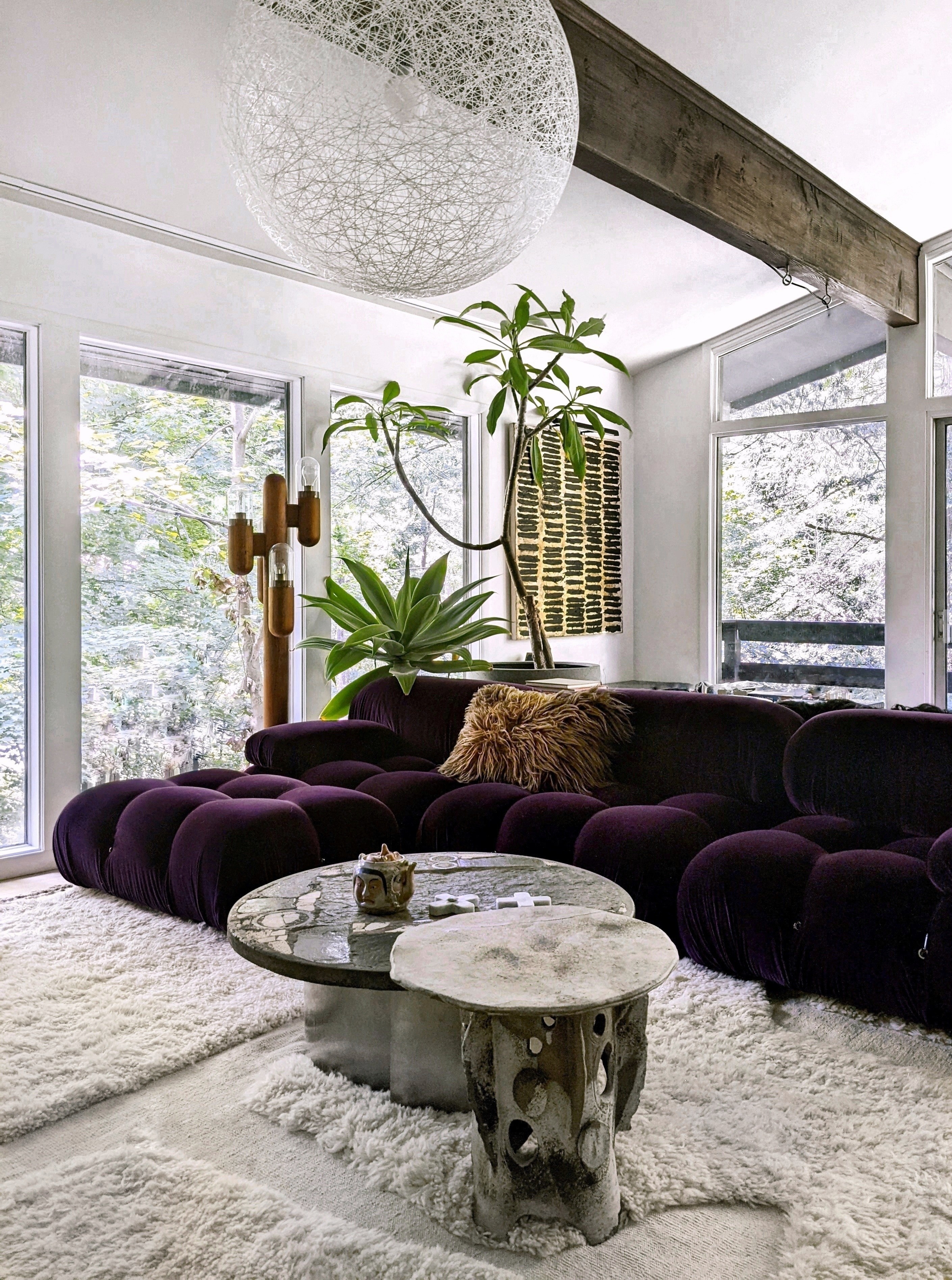
Indoor trees and larger more statement houseplants add so much interest to a... softer room like a living room or a bedroom. It's just not what you expect to see towering out of a sofa. This is the living room of designers Crystal Sinclair, and as well as that wonderful clash of green and purple, we love how the soft curves of this room sit with the architectural plants.
But what are the best indoor trees to bring into your home to create this look? 'In magazines, they usually style the space with a tree, the tree doesn't really stay there. That said, every client wants a tree, and try as I have, I haven't found many that like the indoors even with decent lighting,' says Crystal. 'Lemon trees are a good option, so are ficus trees. In my house I have an agave (a fave of mine) and a plumeria - both need a lot of light!'
9. Group house plants together for a jungle-like effect
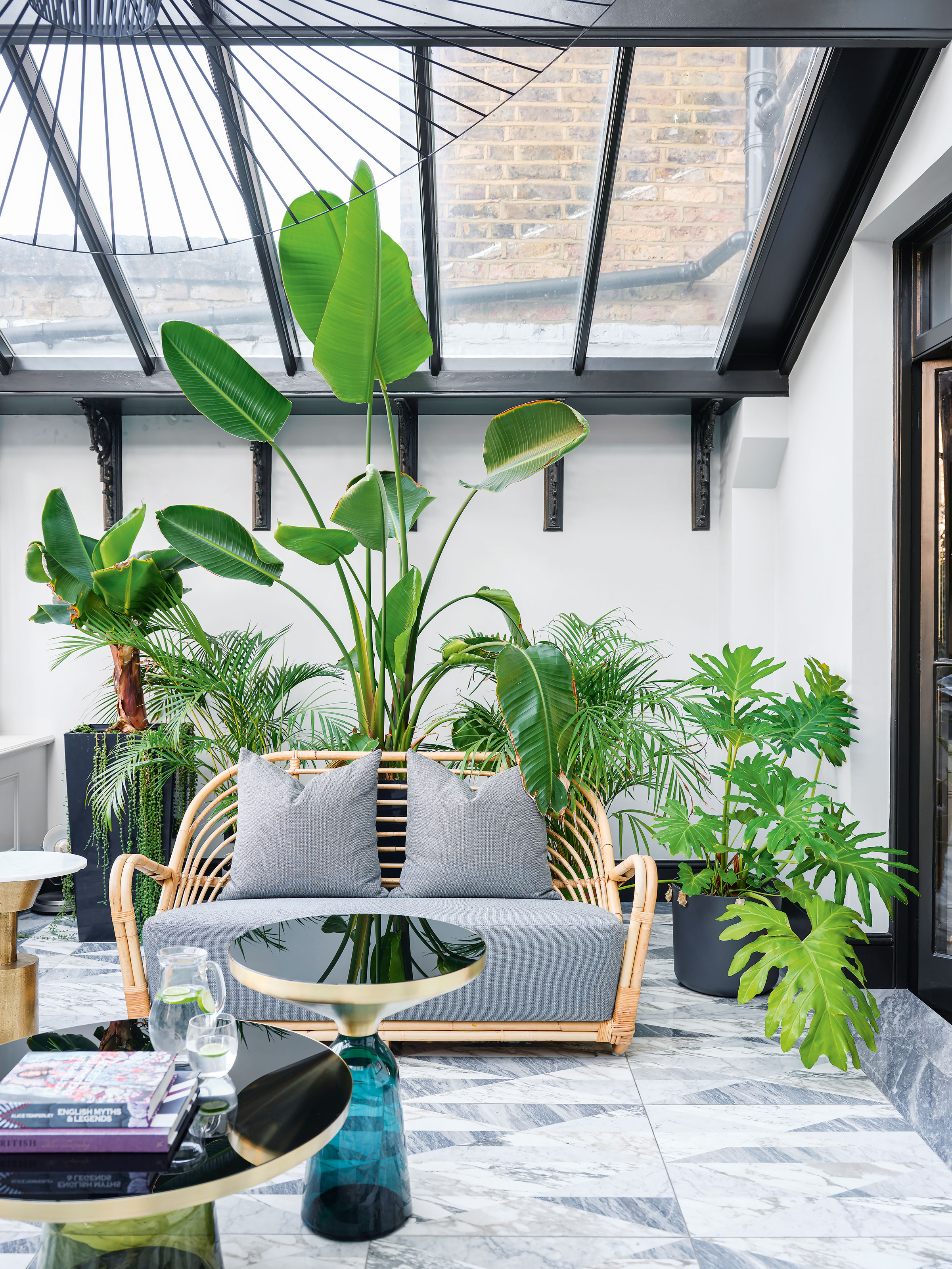
When creating an indoor garden, approach it as if you were styling any other part of your home. When you style shelving for example you want to be bringing in pieces that differ in height, shape, and texture. You want to add depth and interest and encourage the eye to linger. Well, all the same rules apply to displaying houseplants.
'When creating an indoor garden you want to start with scale – not all rooms need to be filled with plants. Often, in a smaller room, one key plant within eye line of the door will give the impact of the room being 'planty'- a lovely fuzzy Asparagus Fern, for example, adding some great texture to a desk or a cascading Philodendron just by a window will add interest to a small room,' advice Alice Dobie.
'If you want to create a larger display it's nice to stick to the rule of three. Often having one larger plant in a corner or to the side of the room with a medium-sized plant just in front and a smaller plant on the floor covering up the pot of the larger plant, a bit like a triangle. This way the foilage of each creates an abundant block of green – this is both easy on the eyes and creates a great feature. The added benefit of grouping plants is that it means they can transpire together and keep the humidity around themselves, thus keeping the plants healthy!'
10. Grow a tree within your kitchen
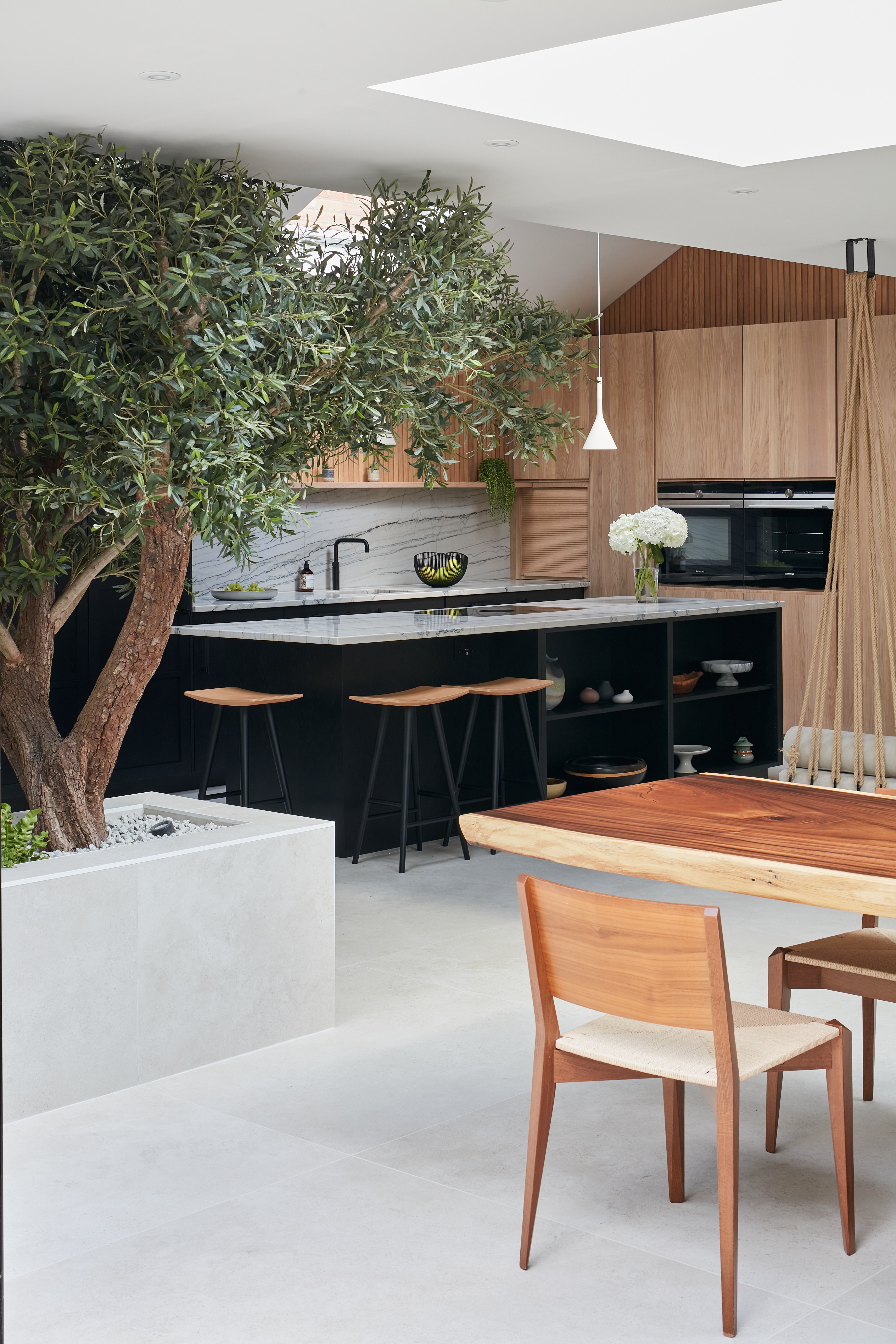
The organic shape of an olive tree contrasting all the clean lines and uniformity of a kitchen is such a beautiful way to soften the room, and bring something unexpected to the design.
'Even through it might seem impossible, bringing a large tree into a space is totally achievable but there are many factors to consider especially if the tree weighs hundreds of kilos! Things to consider are having a proper drainage such as clay pebbles to drain the water away from the tree roots. Make sure there is sufficient light in the room as light is food for plants and make sure you use the right soil,' advises Rhiannon Phenis, Head of Design at Sola Kitchens.
'The brief for this project was to create a unique showstopper of a kitchen, suitable for cooking, eating, entertaining, and socializing in. In terms of style, the clients wanted a kitchen that embraced their Asian heritage and their love of Scandinavian design. The goal, therefore, was to achieve a Scandi-Asian-styled kitchen. From the outset, the clients wanted to incorporate an olive tree into the design and also lots of natural materials. It was also important that the space felt light and airy and that a neutral color palette was used so as to create a calm atmosphere.'
11. Hang plants at different levels
Having plants at different heights within a room is an easier approach to creating that really jungle-like feel. Note how in this space, none of the plants are particularly large, but the collection of taller floor plants, smaller plants on shelves at various heights, and hanging baskets above eye level creates just as much impact as filling a room with towering, mature plants.
'To create a beautiful indoor garden, use the full height of the room,' suggests Richard Cheshire, Patch Plant Doctor. 'If you have bookshelves or a mantelpiece, make them a home for trailing plants, like Devil's Ivy. Or embrace hanging plants suspended from the ceiling, like Satin Pothos or Shingle Plants. The longer they grow, the better they look.'
'When there is harmony between foliage, containers, and the overall environment. A thriving plant is a signal that the space is conducive to life and vitality. Let the containers and pots compliment your decor but make sure to place the plants where they will grow well,' adds Darryl. 'For taller structural plants choose snake plants, Dracaena marginatas or fragrans, Monstera deliciosa (staked to a trellis), Fiddle leaf fig (if you have excellent light), Rubber plants, and Dieffenbachias. And for long, trailing plants – pothos, heart-leaf philodendron, string of hearts (for small spaces), Hoya carnosa (for higher light spaces).'
12. Soften a contemporary space with an indoor garden
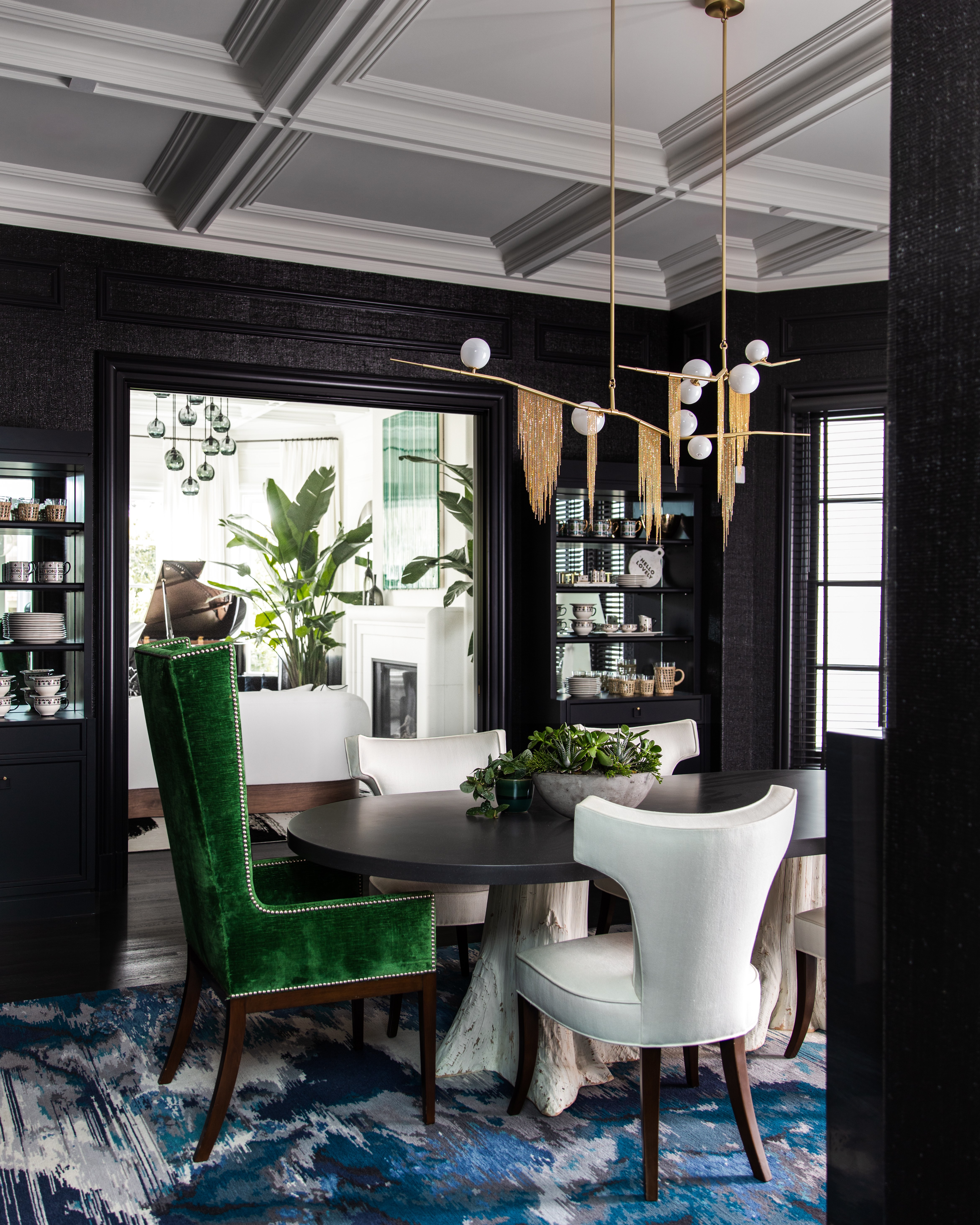
If you are looking for ways to soften more minimalist and contemporary styles spaces, houseplants are a surefire way to do so. More architectural species like palms, aloes, and cacti, will bring shape, texture, and warmth but still sit nicely in a more modern setting.
'This home has a glamorous feel, so the various plants provided an organic element to soften and warm the spaces,' explains Emilie Munroe of Studio Munroe. 'We used large-scale, large-leaf banana palms to compliment the high ceilings and bold furnishings. A more delicate plant would have been lost within the environment. My advice is to create a dynamic indoor garden, cluster larger and smaller scale plants together in groups, and make sure their leaf sizes vary so you have a balanced mix of visual texture.'
And note the concrete bowl filled with succulents, it's a contemporary approach to a small indoor garden that fits perfectly in this elegant space.
13. Keep herbs to hand
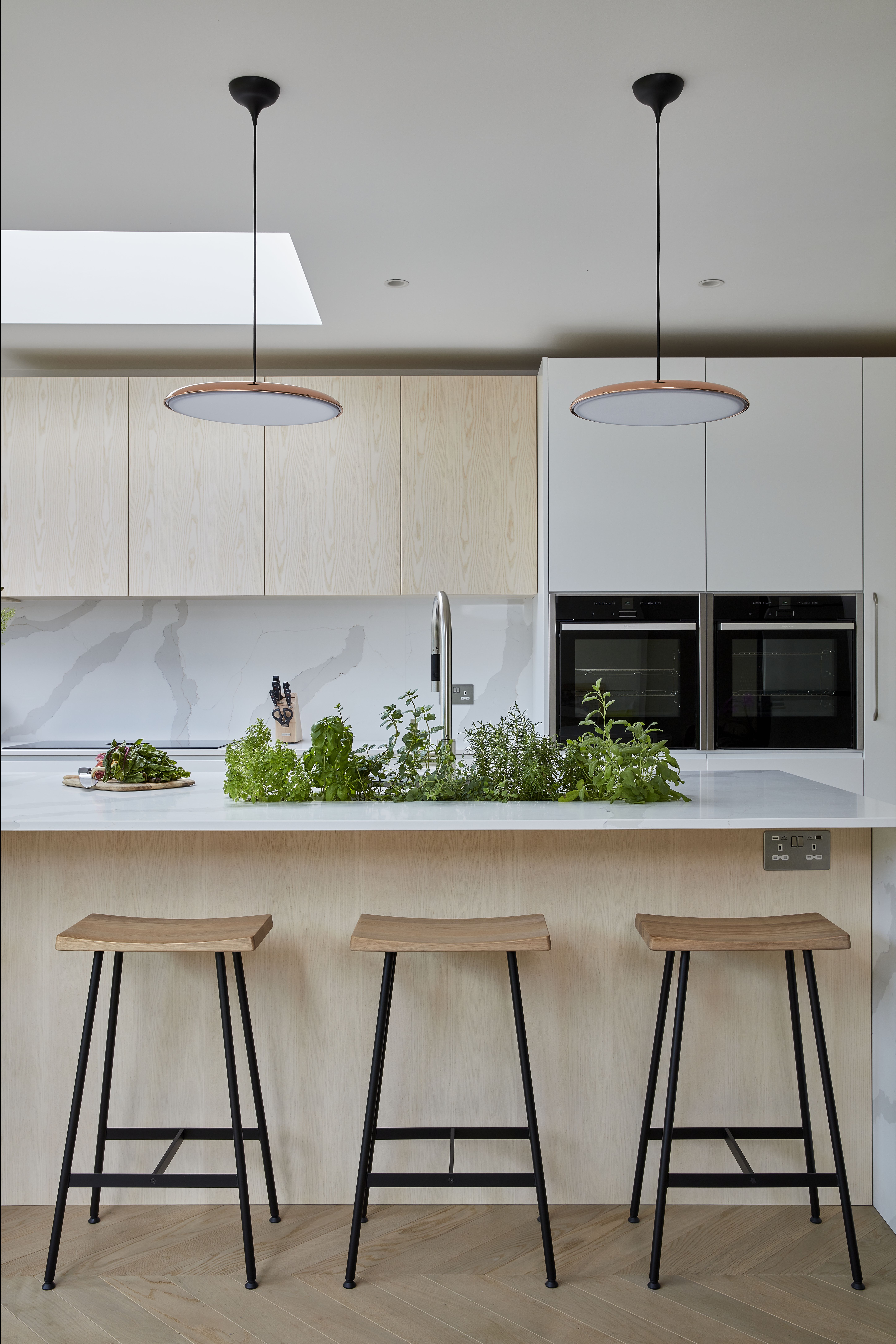
Adding an edible indoor garden to your kitchen just makes sense. Herbs look lovely, small lovely, and taste lovely. Plus, a lot of them are low maintenance and easy to care for. Stick to growing herbs you love and will use and make sure you grow enough based on your needs.
'Most importantly, make sure to choose herbs that you will love to use/cook/eat and types that are relatively easy to grow. This will help to ensure maximum enjoyment in return for your gardening efforts,' advises James Scott, Principal Designer at The Garden Co. 'And herbs are generally easy to grow and therefore provide gardening novices with a wonderful opportunity to start growing their own edible produce.
As for what herbs grow best in a kitchen, James suggests the following:
Parsley – it is hardy and very useful in many dishes – not only the leaves but also the stalks for adding flavor to stocks. Parsley plants last for two years. Buying parsley in the supermarket can be very expensive compared to growing your own.
Rosemary – a popular flavor, an ornamental plant, and easy to look after.
Sage – providing there is sufficient sunlight.
Now in terms of what to grow them in. Herbs are very at home in pots and containers, so you can create beautiful displays to sit on your kitchen countertops just ensure they are in a sunny spot and are watered regularly and they will thrive.
14. Position an indoor garden to create an inspiring view
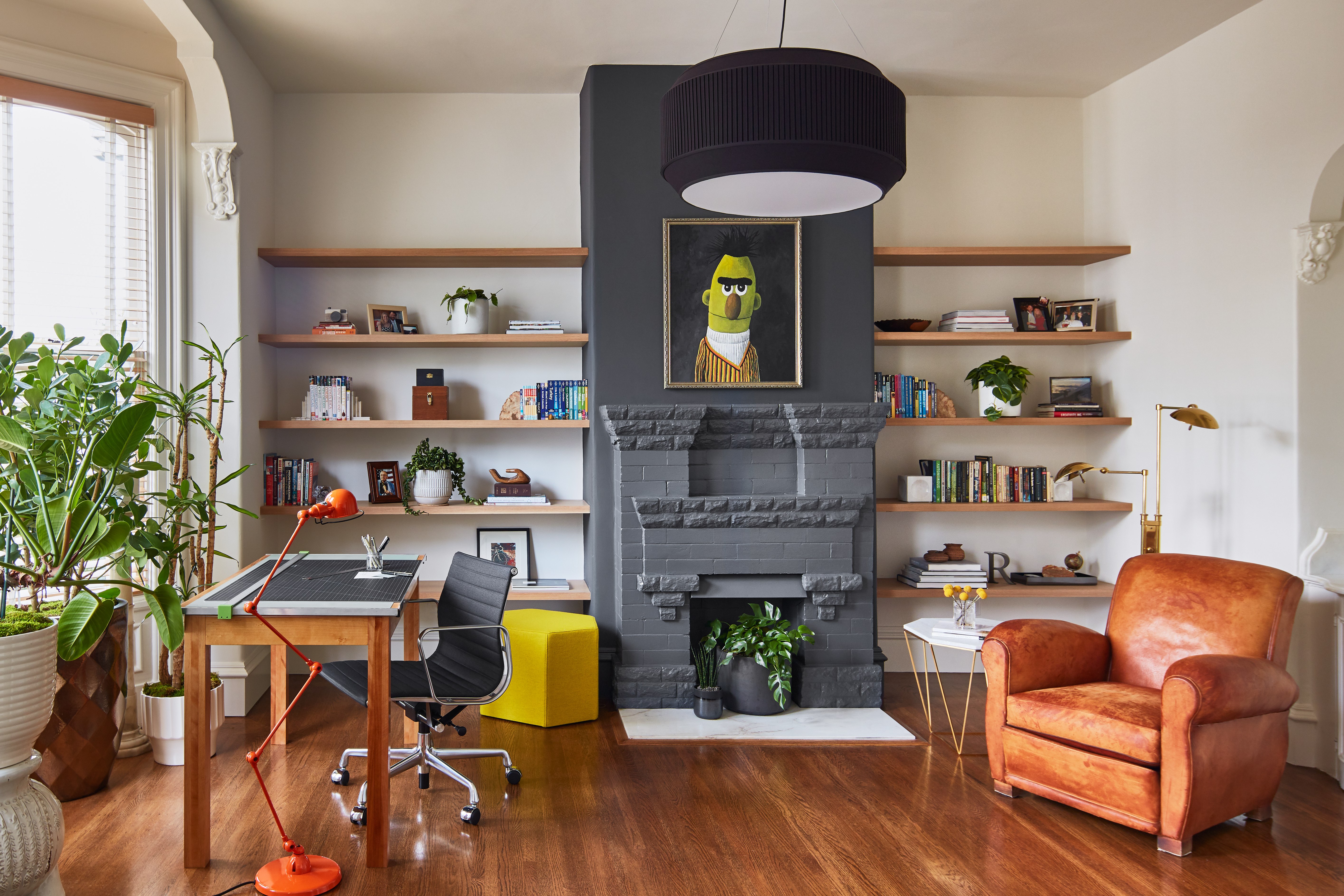
A home office is a great place for an indoor garden, we all know the benefits of having plants around us while we work. In this office plants are positioned between the window and the desk – perfect for the plants as they receive a lot of light, but also perfect for creating a beautiful view from the desk that's green and vibrant no matter what season it might be outside.
'We used potted plants as accessories in this office wall display, mixing pot sizes and plant shapes, leaf scale, and pot styles, into the client's display of books and art. The plants act as green sculptures adding texture and interest,' explains Emilie Munroe.
'Remember to diversify the variety of plants displayed in a room. Mixing cacti with palms with ferns tells an interesting visual story. And checking sunlight exposure where you plan to place your indoor garden is critical. Each plant has certain environmental requirements to thrive, and you want to make sure lighting conditions are spot on before your purchase,' she adds.
What plants are best for starting an indoor garden?
'If you are new to indoor plants, stick with the easy families – Pothos, Sansevieria's, Hoyas, and Philodendrons (there are many, but these are fun starters!). All plants work best if you can keep them alive! So starting with plants that need simple care means they can grow and look fantastic as a good foundation for your indoor garden,' advises Alice Dobie.
'You can also start small by buying or inheriting smaller plants or plant 'pups' (the 'babies' you get from Aloe Vera and Spiderplants), everything will mature and get bigger with time and the right conditions. If you have a larger space, sometimes one or two statement plants are all you need, you will therefore want to seek out plant varieties that have the potential to grow large and wild- for example, Monsteras, Strelitzias, and Palms.'
'My advice is to start with plants which are easy to grow. Look at Spiderplants, Aspidistra, Monstera, etc. Also, look at plant combinations, so put contrasting leaves next to each other. So a large, bold leaf goes next to a finer, more filigree kind of leaf,' suggests author of The Jungle Garden, Philip Oostenbrink.
You could have plant displays in any home, just adjust your plantings to the light levels. Even a display of five plants can already give you a jungle effect. Watering is essential and regular feeding too. If you have plants which more or less have the same watering needs, then that would be easier for beginners.'
The indoor garden starter kit
Can anyone start an indoor garden?
'Yes! Absolutely anyone can start caring and growing for indoor plants, even self-proclaimed 'plant killers'. The plants we keep in our homes originate from all over the world from the sub-tropics to the warm deserts, you, therefore, want to research where your plant grows naturally and facilitate as closely as you can those conditions.' suggest Alice.
'For example, Calatheas are a key member of the prayer plant family and beloved for their beautifully patterned leaves, however, they are from high-humidity forests across South America, and would naturally be nestled on the jungle floor under many layers of dense tree coverage- this equates in our homes to them needing a warm, moist environment with indirect light making them ideal bathroom or kitchen plants (any room where a water source releases moisture into the air).
'Cacti and succulents come from hot, dry desert environments like the western continental USA and North and South Africa, they, therefore, like the opposite of prayer plants, namely bright sunshine, and dry air, and can handle a colder dip in temperature. Ideal conditions in our homes are windowsills that are South facing and lovely warm conservatories.'
'Sticking to families of plants that you enjoy too. The philodendron family, for example, has a huge variation in foilage, but are all relatively easy to keep – but to the untrained eye, it would look like you had a houseful of different species! Keeping plants is also a journey, do not feel you have to instantly know how to repot every plant you own, each new plant is safe and happy in its original nursery pot for up to nine months, so plenty of time to get to know the plant and understand what it needs from you.'
How do you care for an indoor garden?
'Once you have a good foundation of light and acquire suitable plants, care is simple and can even be therapeutic,' says Darryl Cheng. 'Appreciate your plants on a daily basis, which in turn allows you to see if any need watering, cleaning, or pest treatment. Determine when to water by feeling the soil - there are only three different cues to water:
For cacti and succulents - water when the soil is completely dry.
For most leafy tropical plants - water when the soil is about halfway dry.
For most ferns (especially the maidenhair fern) or "moisture-loving" plants (like begonias and some calatheas) - water when the soil is just slightly dry (you are trying to keep the soil evenly moist.)
By using these watering strategies, I never have to "keep track" of watering - I just look/feel the soil.'







